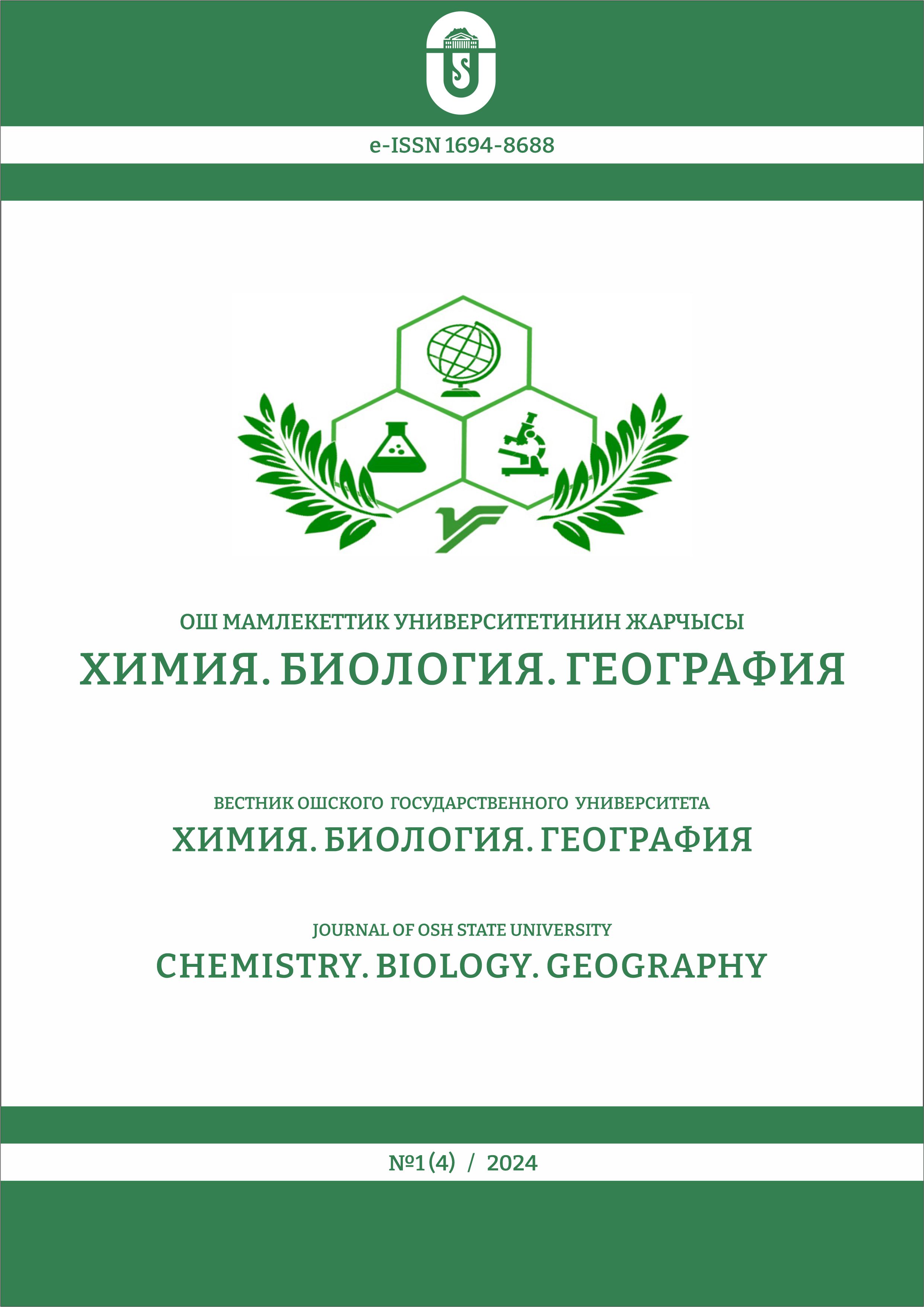ALGAE FLORA OF SOME TRIBUTARIES OF THE CHATKAL RIVER ON THE TERRITORY OF THE BESH-ARAL RESERVE
DOI:
https://doi.org/10.52754/16948688_2024_1(4)_17Keywords:
flora, vegetation, flow speed, water transparencyAbstract
This article presents the results of a study of the algal flora of the tributaries of the Chatkal river where 71 species of algae belonging to 4 classes were found. Floristic studies of algae for mountain and alpine reservoirs of the Kyrgyz Republic are relevant. Office processing of samples was carried out in 2 steps. First, blue-green, green, yellow-green, golden, dinophyte, and red were determined. During identification, rare and new species for Kyrgyzstan were sketched using a RA-6 apparatus and a photo attachment. The transparency of the water was determined using Secchi disks. The pH value was determined using sets of indicators according to Mihalais and a universal indicator. The species of algae was determined using an MBI-3 and Olumpus microscope. The study of their algae flora allows us to expand our understanding of rare, unique and valuable species of these plants, identify patterns of their distribution, and outline ways for the most rational use.
References
Каримова Б.К. Альгофлора водоемов Юга Кыргызстана. Бишкек, 2002 -3с.
Каримова Б.К. К вопросу поясного распределения водорослей // Тез. докл. и сообщений XXIX науч. – теоретич конф. преподавателей. -Ош: ОшГУ. -1990. - С. 104-105.
Музафаров А.М. О географическом распределении водорослей. Ташкент: Фан, 1981. - 238с.
Моомбеков, Б.К. Каримова // проблемы совр. Альгологии: Всероссийск. Школы- семинара-УФА РИЦ. БашГУ 2008. 82-85с.
Чаткал районунун Кызыл-Токой кениндеги глаукониттин химиялык курамы // Bulletin of Osh State University. – 2019. – No. 1. – P. 224-226. – EDN: LHSBFO.
Downloads
Published
How to Cite
Issue
Section
License
Copyright (c) 2024 Journal of Osh State University. Chemistry. Biology. Geography

This work is licensed under a Creative Commons Attribution-NonCommercial 4.0 International License.

